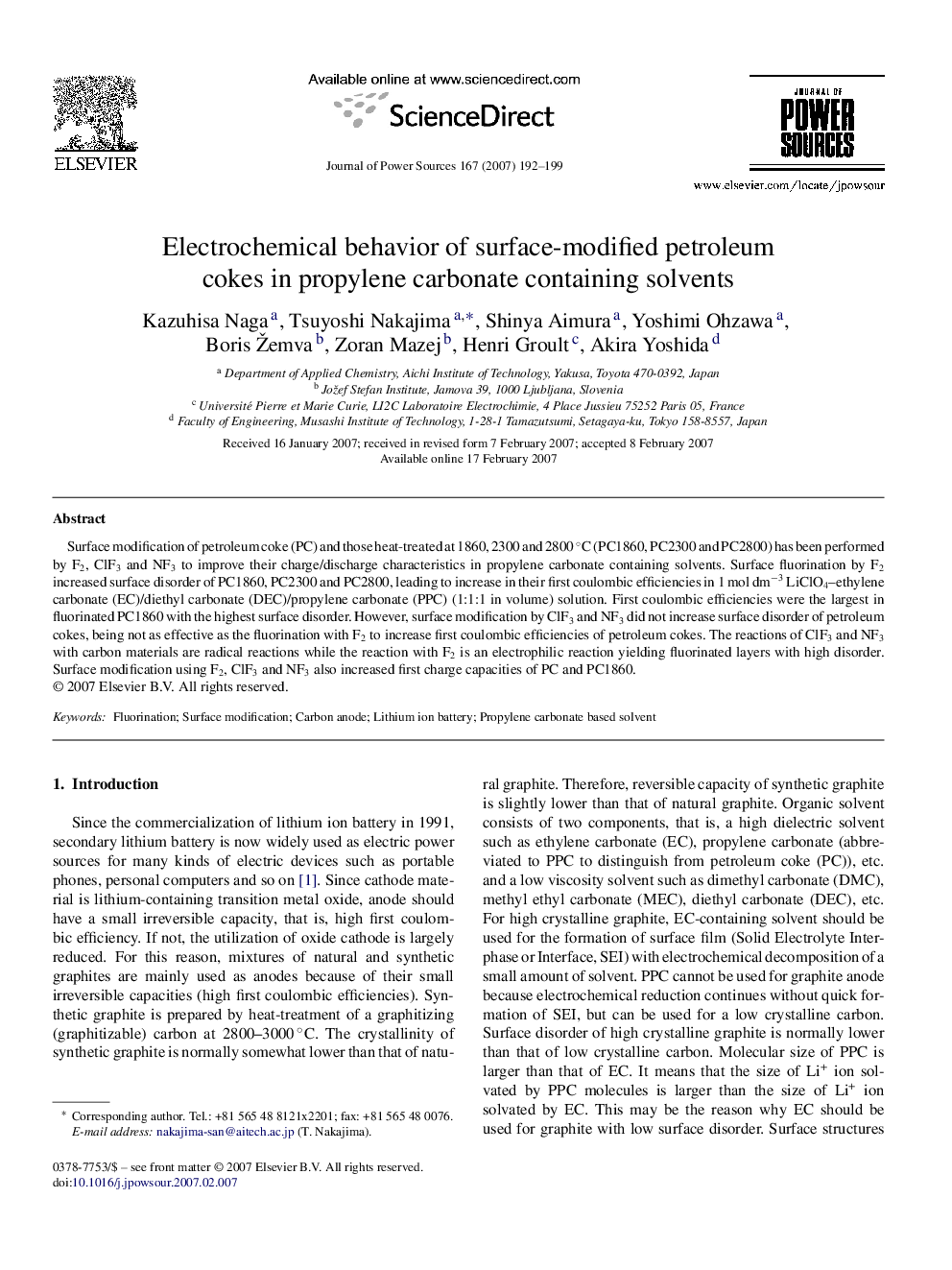| Article ID | Journal | Published Year | Pages | File Type |
|---|---|---|---|---|
| 1294986 | Journal of Power Sources | 2007 | 8 Pages |
Surface modification of petroleum coke (PC) and those heat-treated at 1860, 2300 and 2800 °C (PC1860, PC2300 and PC2800) has been performed by F2, ClF3 and NF3 to improve their charge/discharge characteristics in propylene carbonate containing solvents. Surface fluorination by F2 increased surface disorder of PC1860, PC2300 and PC2800, leading to increase in their first coulombic efficiencies in 1 mol dm−3 LiClO4–ethylene carbonate (EC)/diethyl carbonate (DEC)/propylene carbonate (PPC) (1:1:1 in volume) solution. First coulombic efficiencies were the largest in fluorinated PC1860 with the highest surface disorder. However, surface modification by ClF3 and NF3 did not increase surface disorder of petroleum cokes, being not as effective as the fluorination with F2 to increase first coulombic efficiencies of petroleum cokes. The reactions of ClF3 and NF3 with carbon materials are radical reactions while the reaction with F2 is an electrophilic reaction yielding fluorinated layers with high disorder. Surface modification using F2, ClF3 and NF3 also increased first charge capacities of PC and PC1860.
